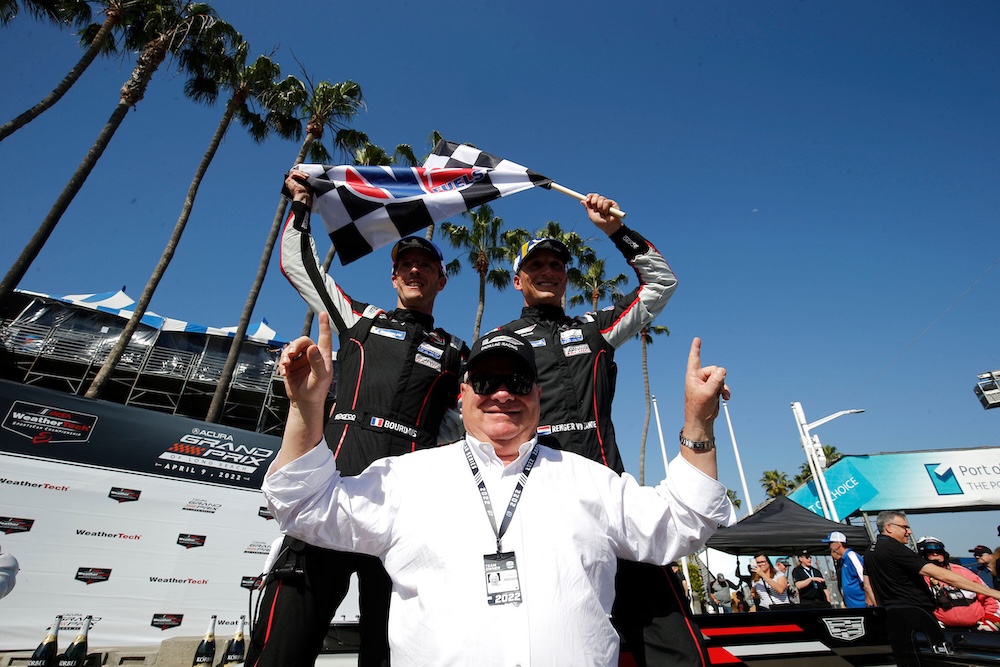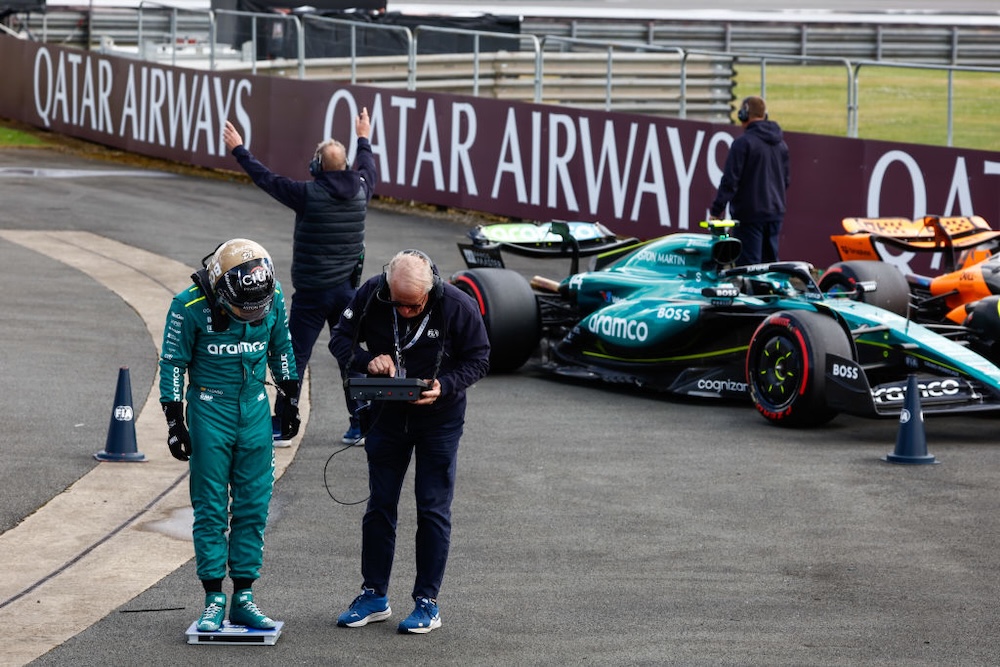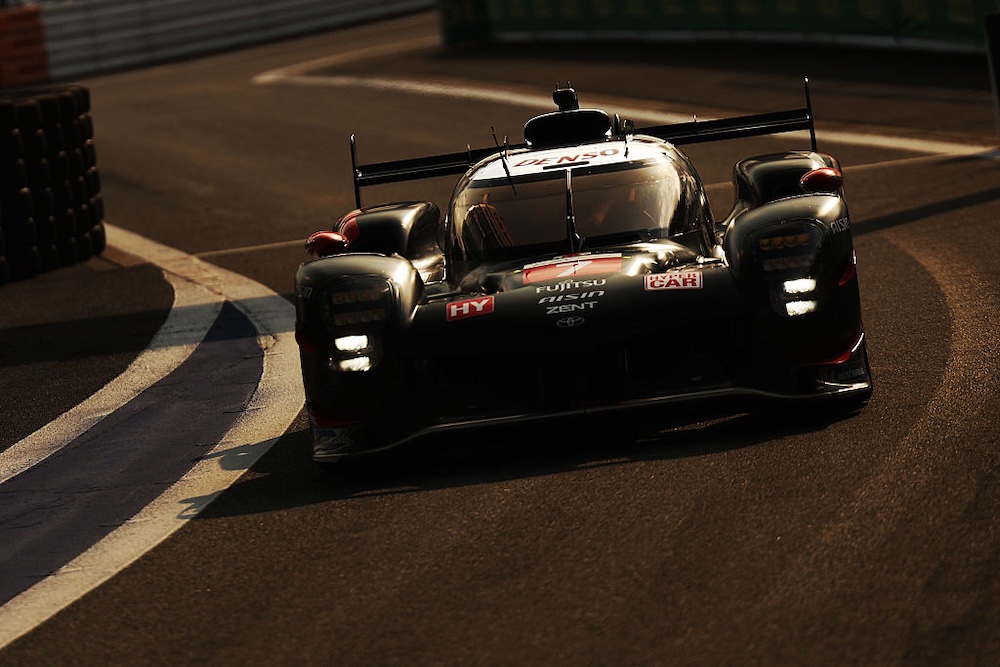Welcome to the RACER Mailbag. Questions for any of RACER’s writers can be sent to mailbag@racer.com. We love hearing your comments and opinions, but letters that include a question are more likely to be published. Questions received after 3pm ET each Monday will be saved for the following week.
Q: So if there’s one consistent theme in IndyCar, on social media and in the Mailbag it’s fans railing against spec cars, spec tires, and only two engine suppliers. Of course there is a reason that it’s the way that it is: not enough impressionable eyeballs on TV, butts in seats, buzz on social media, etc to generate sponsor interest/money for the series or the teams.
So let’s just assume that all current trends be damned and motorsport in this country generates increasing, rather than decreasing (or steady) interest. How many eyeballs on all the media platforms (not just broadcast TV?) and butts in seats would it take to generate the sponsors to return to a more freewheelin’ open rule book? What would sponsors want today (aside from a huge audience) that they wouldn’t have back in the glory days?
Mike Z, Breckenridge, CO
MARSHALL PRUETT: Great questions, Mike. It might be as simple as saying that a return to IndyCar being a home for big-box stores and brands like it was during the CART era, and for a while to a lesser degree when major CART teams switched to the Indy Racing League, would send a powerful signal to the sporting, entertainment, and business worlds that IndyCar is a powerful entity to engage.
Take many of the best-known cigarette brands, beer companies, and most popular retailers, and they were all found in CART, spending wildly, buying huge blocks of tickets and handing them out, and matching their grand event activations with national TV or print ads pointing back to their CART racing programs. The average person in the U.S. was likely aware of CART/IndyCar, and not necessarily because they liked it and followed it, but because huge brands made significant efforts to transport CART to 30-second commercials on their TVs or ads in the newspapers and magazines people read.
That’s what I think of when the topic of bringing today’s IndyCar ‘back’ to where it once was in the national register of awareness. It wasn’t because we had two tire supplier or four unique chassis vendors or because the racing was great. The cars were amazing, no doubt, and blew your mind if you got to see them live. But that wasn’t the measure of success or popularity. It was the sponsors and activations – the array of engine suppliers also went big on promotions – who brought CART/IndyCar to the masses in the comfort of their living rooms or bathrooms or break rooms at work. If we ever get back to that point, money will be flowing like a river through the paddock.
One of the wonky realities of CART in the late 1990s is the stands were often full, but the TV ratings weren’t necessarily insane. In my brain, I often think we had five million people tuning in at all times, but it wasn’t the case.
The 1999 season spread across the ABC network and ESPN on cable had an average of 1,130,000 viewers per race during a 20-race season. FOX just closed its all-network debut season with an average of 1,362,000 across its 17 races.
On the surface, it suggests the 1999 ratings were soft, but it’s also worth noting that CART did not have the Indy 500 on its calendar in 1999; that belonged to the IRL. CART had nothing like the 500 to pull its ratings average way up like FOX had this year where many races produced audiences in the 700,000 range while Indy brought in 7.8 million, which acted like a rocket to drive the season-long average up to 1,362,000.
Nonetheless, the new FOX average is strong. It should pique the interest of more sponsors. The new quest is to keep the non-Indy races rising. That’s where CART circa 1999 wasn’t so bad. All it had was non-Indys and its average, split on network and cable, was more than 1 million viewers per race. If FOX can get to that point with its all-network plan, and deliver the big Indy number, the series and its teams will have something meaningful to sell at a higher price to sponsors.
Q: I wonder if you are hearing of 2025 PREMA crew members landing at other teams for 2026? And in your opinion could the stars align and Dale Coyne sign Rinus Veekay again for the 2026 season if Rinus is without a drive? Dale wanted him and business is business, etc. Were bridges burnt, or is this a possibility please?
Oliver Wells
MP: Some, yes, but not in large quantities. I’ve had a few team owners tell me they’ve heard the entire team is up for sale (the asking price has ranged between $20-25 million), but when I ask if they’ve been contacted by PREMA to buy the team, they’ve said no, which I’ve said is strange, since the 10 other teams would be the first you’d expect to hear from the 11th team if the 11th was indeed for sale.
Anything is possible. For where Rinus is headed, it’s hard to find the upgrade now that we know it’s not just Michael Cannon that’s being left behind at Coyne, but also a technical alliance with Andretti Global. If Rinus is on the market, and interested in a return, Dale’s wise enough to see the big picture. Justin Wilson drove for Dale, left for Dreyer & Reinbold, and returned after two years. Same for Sebastien Bourdais, who did two stints with Dale, so there is a precedent.
As I understood the situation, VeeKay was looking at the end of 2026 where the big opportunities become available. So whether it was staying with Coyne in 2026 or allegedly moving to JHR for a year, putting himself in play with Andretti, or Arrow McLaren, and maybe others with front-running seats that could open up a year from now, is the heart of the strategy.
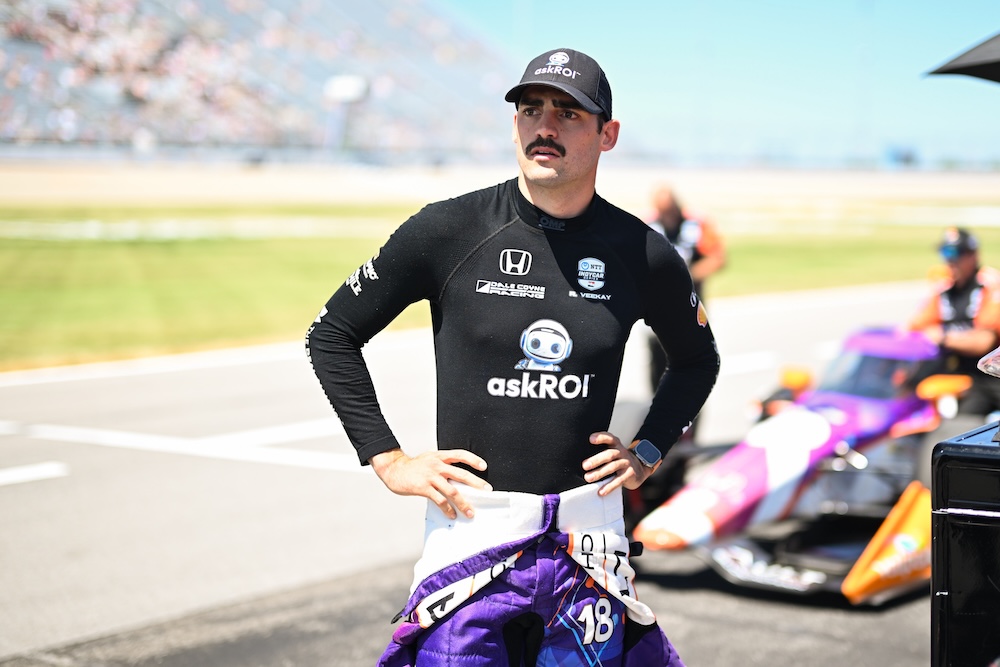
VeeKay is taking the long-term view, but is it causing short-term pain? James Black/Penske Entertainment
Q: I’m planning to go to one street race next year. Been to ovals and road courses, never to a street race. Which ones do you recommend, with priority given to track view, and fan experience?
Ken in Indy
MP: Long Beach.
Q: What ever happened to IndyCar streaming on a dedicated FOX sports streaming service? If I remember correctly, we were told by FOX at the start of the season that something would be out by the end of the year. Was that just something they told the fans so we’d stop bugging them about it?
Max Camposano
MP: From August 22.
Q: Forgive me if this has been covered, but when the 2026 IndyCar schedule was released, was there a statement indicating that all of the races would again be televised on big FOX rather than FS1? Has that been confirmed, or is there a chance that several of the events could slide backward onto FS1? If all of them are going to be on network TV again, it feels like that would have been a key, loud talking point when the schedule was released, but I don’t believe it was.
Mark Founds, Mason, OH
MP: This was the closing sentence in the second paragraph of the schedule story I wrote: “In a continuation from 2025, all races will be broadcast on the FOX network.”
Q: Your response to David from PA last week was weak. If IMSA does have local yellows as you say, they have a funny way of showing it! As in, when do they ever use a local yellow?
It’s not a small matter when 25-50% of race time is FCY. Road America is my home track. It’s four miles. If a local yellow can’t be used there, IMSA does not have local yellow flags.
Does IMSA even care about ‘racing’? Or will we all be part of a modern-day Emperor’s New Clothes story, saying the ‘racing’ is great? If we do, the sport will die. Please don’t be a party to its demise.
Steve Rosaaen, King of Lower Ellsworthia (self-appointed)
MP: A question was asked and answered. But weakly, apparently. I’ll be sure to answer IN ALL CAPS GOING FORWARD BECAUSE THAT MEANS I’M STRONG, OR RIGHT, OR SOMESUCH THING. (I think.)
I get it. You don’t like the overly long stretches of full-course yellows that consume far too much of some IMSA races. Who does?
Can we use a little bit of logic and a touch of assumption to state that, like Dean Wormer so eloquently proposed, the number of IMSA fans who love the forever cautions is zero-point-zero?
If an IMSA driver has an issue and can extricate themselves from the problem in a timely manner, you get a local yellow. Happens routinely and without fanfare. Someone out-brakes themselves, for example, fires into the grass at wherever, and trundles back to the racing surface seconds later: Local yellow is shown while the driver handles their business and it’s withdrawn afterwards.
It’s when the resolution isn’t swift, or something requires onsite assistance, where the drawn-out cautions come into play.
IMSA has heard the complaint countless times. As those hundreds, or maybe thousands have said, IMSA should adopt the WEC’s virtual safety car technology and use slow zones in place of full-course cautions.
Vaguely related, I didn’t have a reason to bark at former IMSA president Scott Atherton on regular occasion, but one instance that stands out is where I met the end of my frustration with poor driving standards and the ensuing forever-long cautions at Sebring in 2014. (See, this really isn’t a new thing).
The 12-hour race had 12 cautions totaling 4h57m, and one red flag for 6m49s. That left just 6h56m of green racing for the country’s most prestigious endurance race, which was nearly cut in half by inept drivers who should not have been licensed, a lax approach to applying control to those drivers by the series’ stewards, and the ensuing time it took to retrieve broken cars or repair the barriers while cycling the classes through pit stops and reordering the field over and over again.
Of those 12 cautions, only three required less than 20 minutes of inaction. If you think Road America was bad, Sebring had it covered.
The thing to prevent is a reason to pause the entire race. When that happens, by rule, it triggers one of two tiers of pit stop procedures. If it isn’t the quick routine, which feels like it’s a rarity, it’s the longer procedure where all cars are allowed to pit in two separate stages: Prototypes first, then GTs.
At a long track like Daytona or Sebring or Road America, it takes forever. And once that’s done, the in-depth effort to reorder the field, across all four classes, kicks in. And that also seems to take forever. It tends to require an exceptional amount of time—often longer than the cleanup took at the site of the problem.
That’s what going to the WEC’s VSC and slow-zone routine would prevent, and, in theory, greatly improve the quality of racing. But the quality of racing in the WEC is my biggest complaint – especially at the 24 Hours of Le Mans – where the VSC/slow-zone process often remove the opportunity for restarts and memorable passes. There are exceptions, of course, but my single biggest issue with WEC races is the difference in caution/pit lane procedures. Despite its clear drawbacks at times, I’m a bigger fan of IMSA’s procedures.
So, beyond adding to the list of complainers complaining about an issue that’s already been complained about for at least a decade, I welcome suggestions on how to solve the problem.
THANKS FOR WRITING IN, KING.
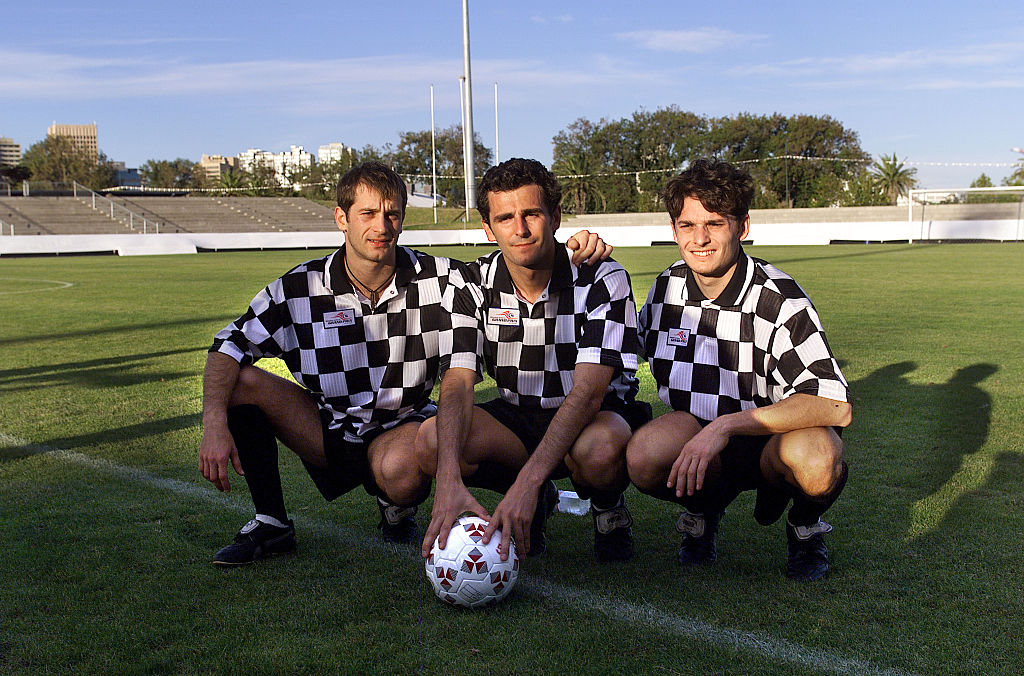
I have no relevant photos of IMSA and flags. But I do have a photo of Jarno Trulli, Pedro de la Rosa and Giancarlo Fisichella dressed as flags, so let’s go with that. Steve Etherington/Getty Images
Q: The 2026 Phoenix IndyCar race is listed on Phoenix Raceway’s website, but I don’t see any mention of qualifying. Surely there will be at least a practice session as well as qualifying during the ‘NASCAR Championship Weekend’, right?
IndyCar’s website lists the event as happening on March 7th and 8th (Friday and Saturday). Phoenix Raceway’s site is selling tickets only for March 8th and 9th. If the cool cars are running on Friday the 7th (I assume for practice and/or qualifying), will the track even be open to the public?
When IndyCar had top billing at this track, the race length was 250 laps. Is this still the case with the series most likely serving as an undercard to NASCAR’s B-series?
Any insight will help in my decision to buy tickets and then drive 300 miles to the event, even if this whole endeavor reminds me of a recent interview with the guitar player from Drivin N Cryin when he said: “You did not want to open for the Ramones. Their crowd would eat you alive.” Hopefully IndyCar gets treated with more respect by the headliner’s audience and promoters than Drivin N Cryin did.
CC
MP: IndyCar will have a full-length race at Phoenix. I asked the series for more info on the Friday question and was told the schedule is still coming together, but yes, IndyCar action is anticipated for Friday and to look for an upcoming communication from the track and series on what they’re planning.
Q: I thoroughly enjoyed being at the Battle on the Bricks. IMSA put on a pretty good race, and I always appreciate the open paddock and grid walk before the race. Walking through the paddock, I did get to see some talented young racers like Broc Feeney, Hunter McElrea, and Toby Sowery. Feeney is having an amazing season in the Supercars, while I remember McElrea and Sowery from racing in the IndyCar ladder system.
I’ve heard a rumor of Feeney perhaps coming over to the U.S. to either race in NASCAR or IndyCar. To me, McElrea and Sowery seem to be at the point in their careers where they are leaning toward sports cars, but the door is still open to IndyCar provided the right opportunity comes up. What are your predictions for the future of these three drivers I’ve mentioned?
Brandon Karsten
MP: Perfect opportunity for Feeney to make his IMSA debut with Aussie team owner/driver Kenny Habul. I doubt it would become as lucrative as driving for T8 in Supercars, but standout GT stars like him are rather attractive in the GTD and GTD Pro ranks. Not so much in prototypes where Hunter and Toby race.
McElrea hasn’t given up on IndyCar, but as I’ve suggested to him, going all-in on sports cars is where he needs to focus since the IndyCar market wants one of two things today and for the foreseeable future: A monster, proven open-wheel talent with race wins and/or championships to offer, or an almighty sum of money, and he’s lacking both.
I don’t question his talent, and if there was a team that wasn’t looking for instant results from a proven veteran or needing gobs of cash, he’d be a great candidate. But we aren’t living in those times, and before long, there will be fewer avenues for him to reach IndyCar.
Take the introduction of charters to IndyCar which has stripped the ability for teams to run extra cars outside of Indy without fear of failing to qualify, and the mounting pressure from some team owners to reduce the size of the field, and that means we’re speeding towards a smaller car count with more fully professional entries where teams hire their drivers.
Same exact thing for Sowery. Outside of the Indy 500, we don’t have any teams actively searching for driver to run in extra cars at the other events. Unless it’s handing $9 million to a Coyne or Foyt, and in a hurry, I can’t find a pathway for Toby or Hunter to become an IndyCar driver.
Talent aside, the teams in need of drivers for 2026 need money, first, either from the drivers, or a sponsor who specifically wants to pay a team to run the driver they prefer. In both instances, I’m unaware of these two meeting the financial criteria, but I’m privately rooting for them.
Q: Alpine just won a great race at Fuji, and so now both the best-sounding (Cadillac) and best-looking (Alpine) Hypercars have won a race this year. Yay!
But my question isn’t about either of those cars. My question is whether Honda is any closer to bringing the ARX-06 to the party? Two of them in IMSA just isn’t enough. Is there any hope of seeing them in WEC?
Duncan, Ottawa
MP: With Honda/HRC actively evaluating its greater plans to race here in IndyCar, NASCAR, or both, or neither, or just one of those two, I think we’ll need to get an answer on where the company is headed before commissioning a WEC program moves closer to the top of the planning pile.
It appears to be committed to IMSA, so I don’t have that as a question mark. I know HRC is passionate about endurance racing – it’s not like the people there aren’t passionate about other forms of racing, but GTP/Hypercar competition is especially revered – so depending on where it goes with IndyCar/NASCAR, an expansion into WEC could be possible.
Main takeaway for me is how IndyCar and NASCAR are expensive, with NASCAR being the more expensive of the two. If Honda stays in IndyCar and skips NASCAR, I could see a glimmer of hope for WEC. If it enters NASCAR, I don’t know where the budget would come from to add a second, NASCAR-size budget to do international endurance racing.
Q: With Ruzewski being named as Team Principal of Andretti Global, do you have any feeling about whether this was shuffling a loyal soldier like Rob Edwards to another position in the family to make way for better? With all the money Andretti Global has, it has consistently underachieved and it always seems to be in the little details that separate a team like Andretti Global and the Team Penskes or CGRs of the world.
I like Rob, but when the cartoon anvil seems to drop on your cars all the time at some point a change has to be made.
Jeff Smith, State College, PA
MP: I was expecting Ron to join the team in a leadership role as a complement to Rob. I wasn’t expecting Ron to lead the IndyCar team without Rob.
The move tells me TWG is taking a fresh approach with its IndyCar program, which might be obvious, but after taking a slight step back in 2025, I think we’re seeing Dan Towriss’ unflinching pursuit of success in the leadership change. All the best team owners/leaders behave that way; if Chip or Roger or Kanaan believe a change will make their program stronger, they make the change. Sometimes it’s a cold decisions, but they DGAF.
